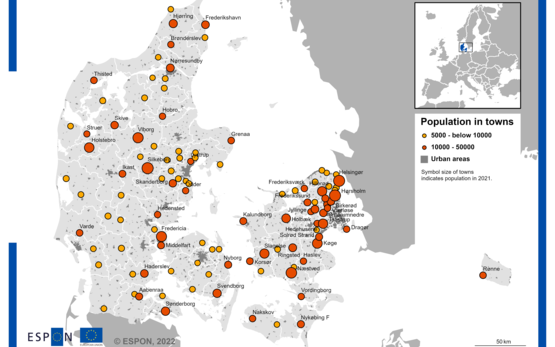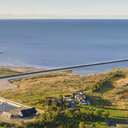Spotlight
-

Denmark, small and medium sized cities
Case Studies | August 25, 2022Looking for new activities and attractions to maintain vibrant town centres and develop appealing urban areas

Looking for new activities and attractions to maintain vibrant town centres and develop appealing urban areas

This report contributes to the Maritime Spatial Planning with two objectives: to undertake an analysis and characterization of the coastal and maritime planning and land-sea interactions from a mul

Article 174 of the TFEU states that: '’the Union shall aim at reducing disparities between the levels of development of the various regions and the backwardness of the least favoured regions.

This project, emanating from the targeted analysis project Maritime Spatial Planning and Land Sea Interactions (MSP-LSI) explores the potential spatial tensions between the deployment of renewable sources of blue energy (energy derived from our seas and oceans), with a particular focus on offshore wind energy, and other (potential) utilisations of the European seas.

This study analyses the implementation of an Integrated Territorial Investment (ITI) targeting small islands of the North Aegean Region in the 2014-2020 programming period, considering observed pat
The Szentes district (LAU1) is located in the Great Hungarian Plain. The area is characterised by traits of “inner peripherality” linked to its geographical position (in between two regional centres), and accessibility issues (the main railway lines and highways bypass the town).
The Mansfeld-Südharz (NUTS 3) region is an example of long-lasting population decline that characterizes East of Germany. Shrinkage, for this region was linked to the re-unification process (1989) and the subsequent collapse of the copper mining industry.
The Mansfeld-Südharz (NUTS 3) region is an example of long-lasting population decline that characterizes East of Germany. Shrinkage, for this region was linked to the re-unification process (1989).
The case study areas of Siemiatycze, Hajnówka and Bielsk districts (LAU 1) are located in the Łomża subregion (NUTS 3). Population started to shrink in the 1950s due to forced industrialization and after 1989, due to the political transformation.
Lovech province (NUTS 3), comprising a group of three municipalities, Troyan, Apriltsi and Ougarchin is situated in the lagging North-Western region of Bulgaria. The origins of depopulation in these rural areas date back to the socialist past.
The CIRCTER project carried out three spin-off studies. This spin-off aims to support Switzerland and Liechtenstein with their transition to a circular economy.
The CIRCTER project also carried out three spin-off studies to increase the national, regional and local relevance of the CIRCTER evidence in policy processes and developments at different scales.
The CIRCTER project also carried out three spin-off studies to increase the national, regional and local relevance of the CIRCTER evidence in policy processes and developments at different scales.
Each case study within the CIRCTER project looks into an initiative that have been implemented to move towards a circular economy and with that tries to identify how circular economy works in real
Each case study within the CIRCTER project looks into an initiative that have been implemented to move towards a circular economy and with that tries to identify how circular economy works in real
Each case study within the CIRCTER project looks into an initiative that have been implemented to move towards a circular economy and with that tries to identify how circular economy works in real
Each case study within the CIRCTER project looks into an initiative that have been implemented to move towards a circular economy and with that tries to identify how circular economy works in real